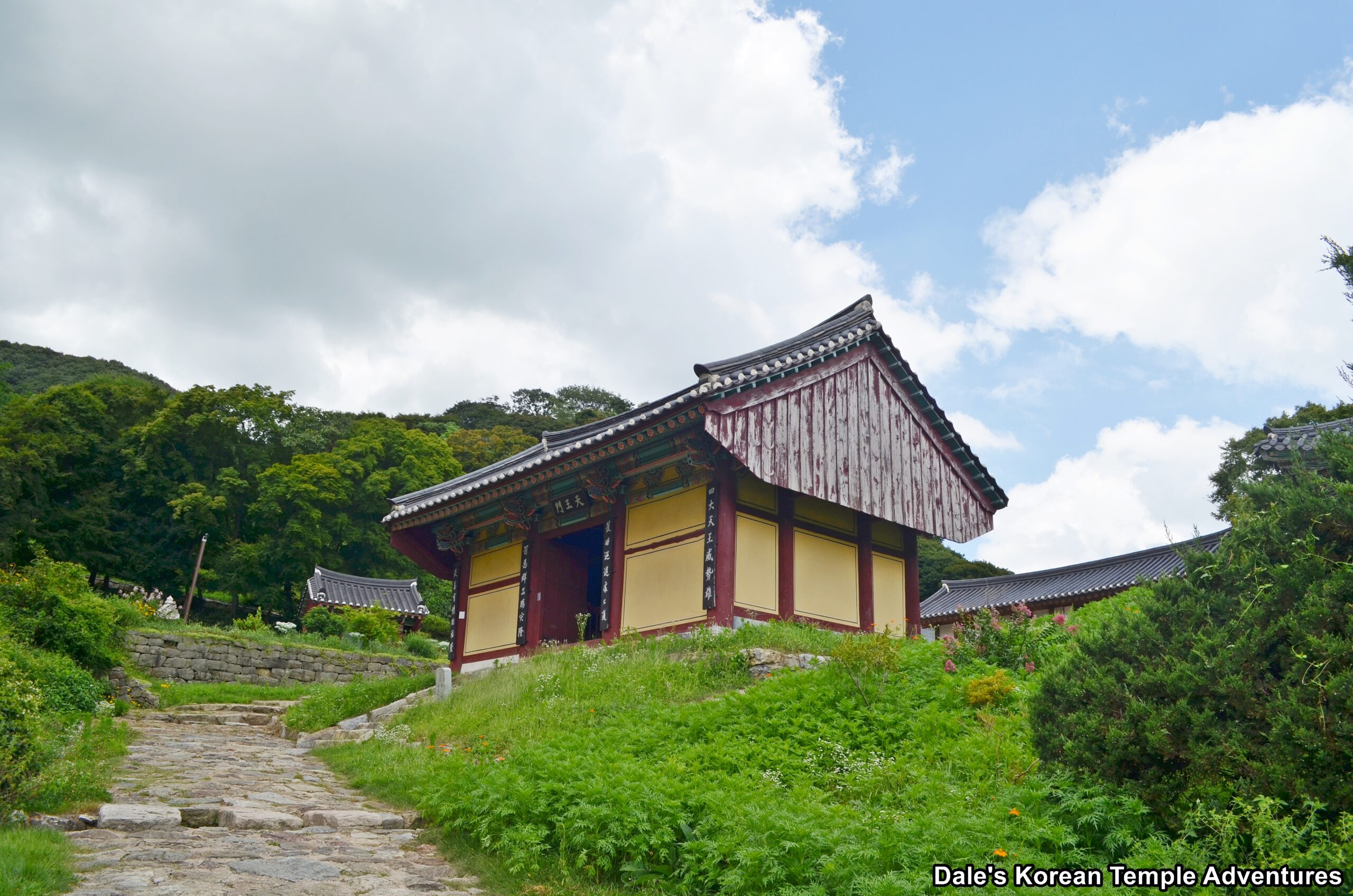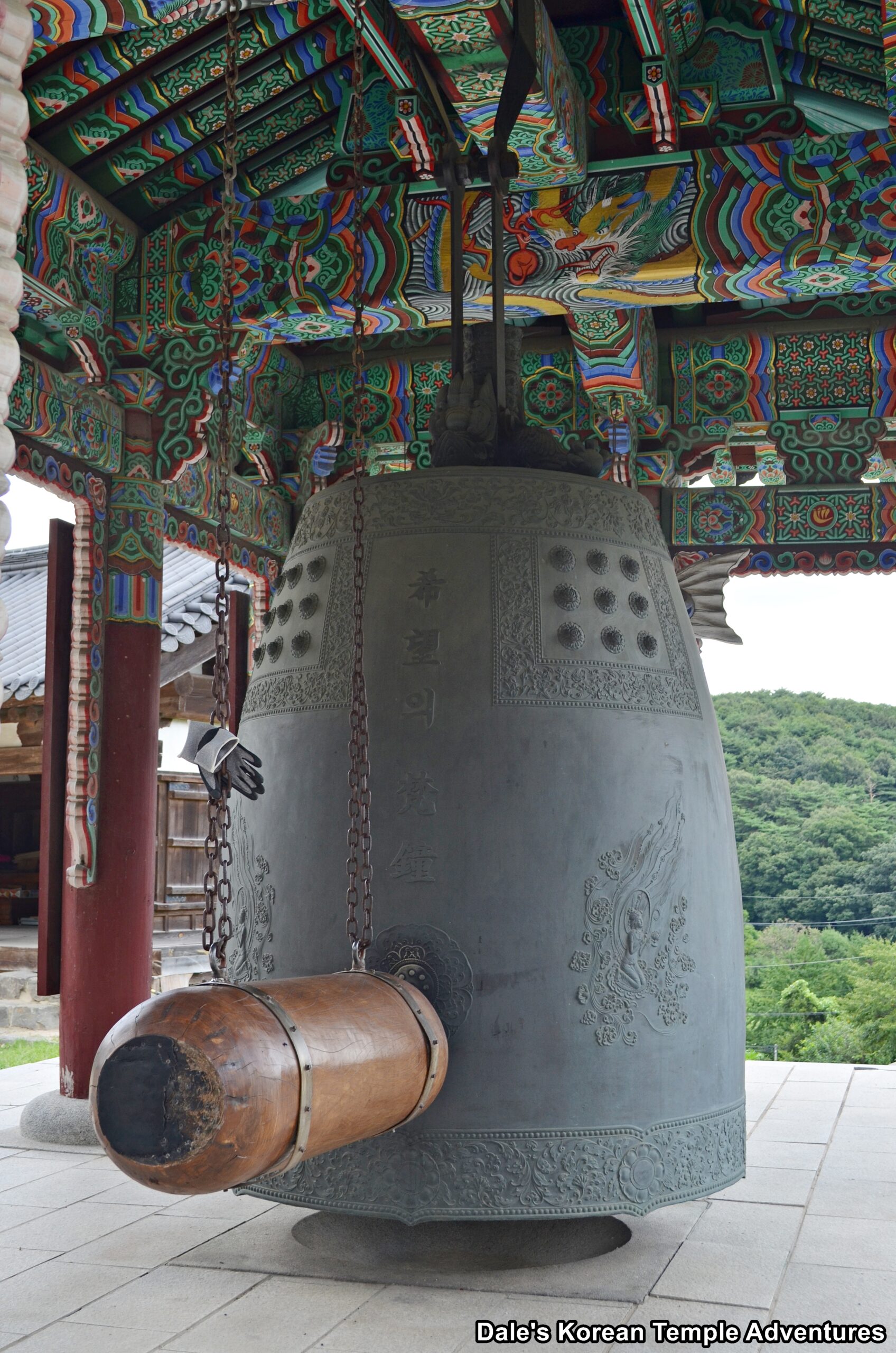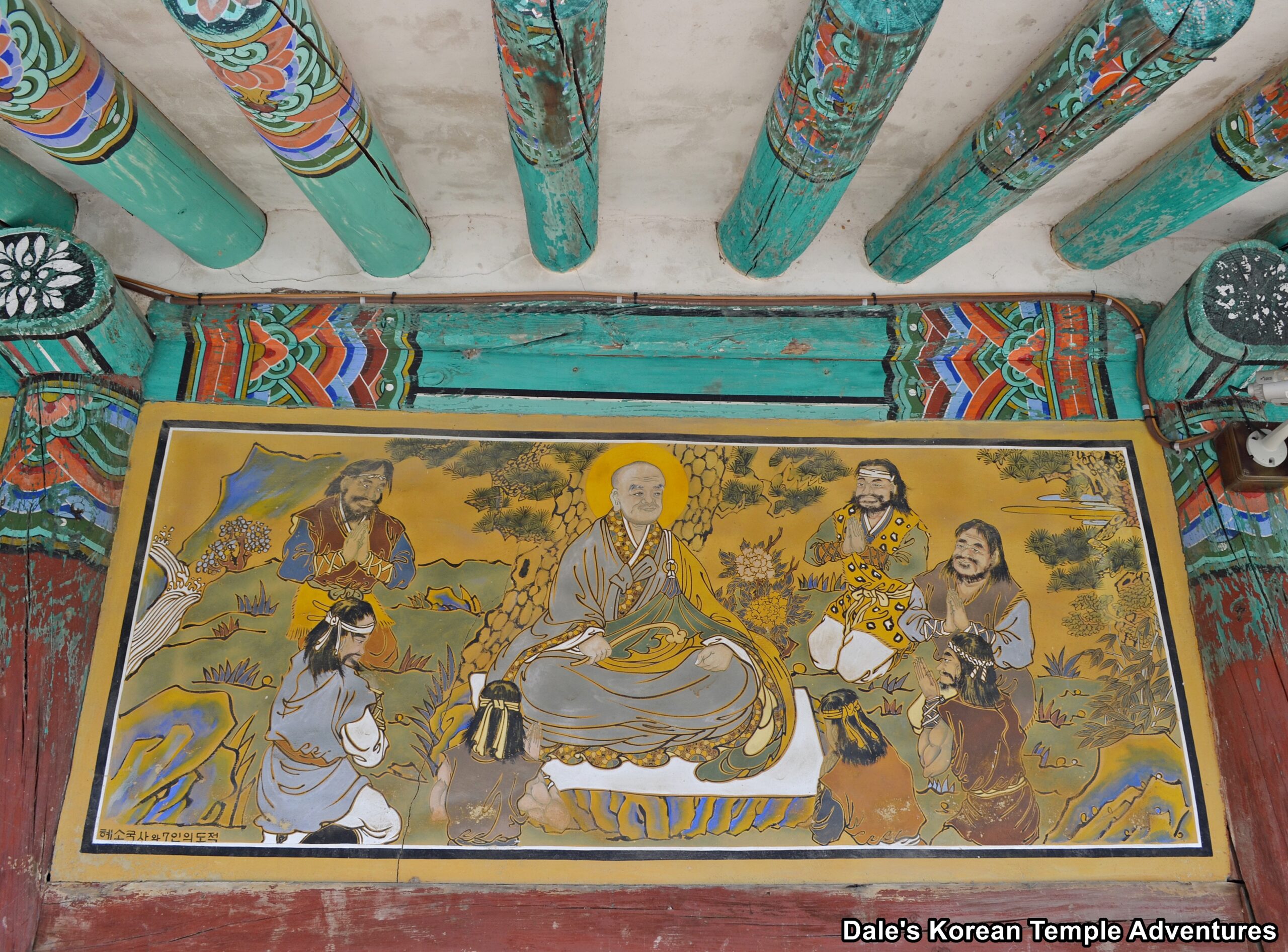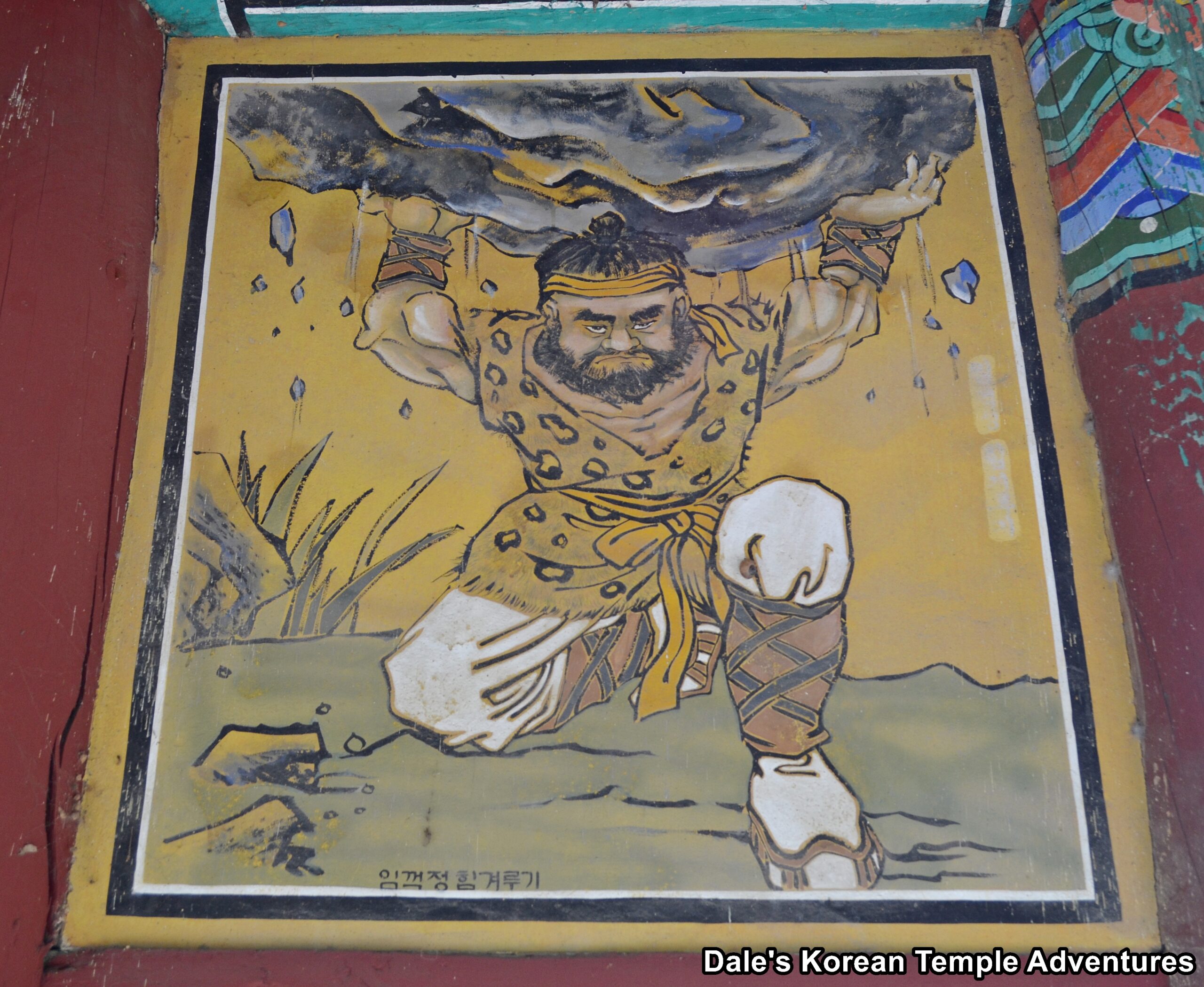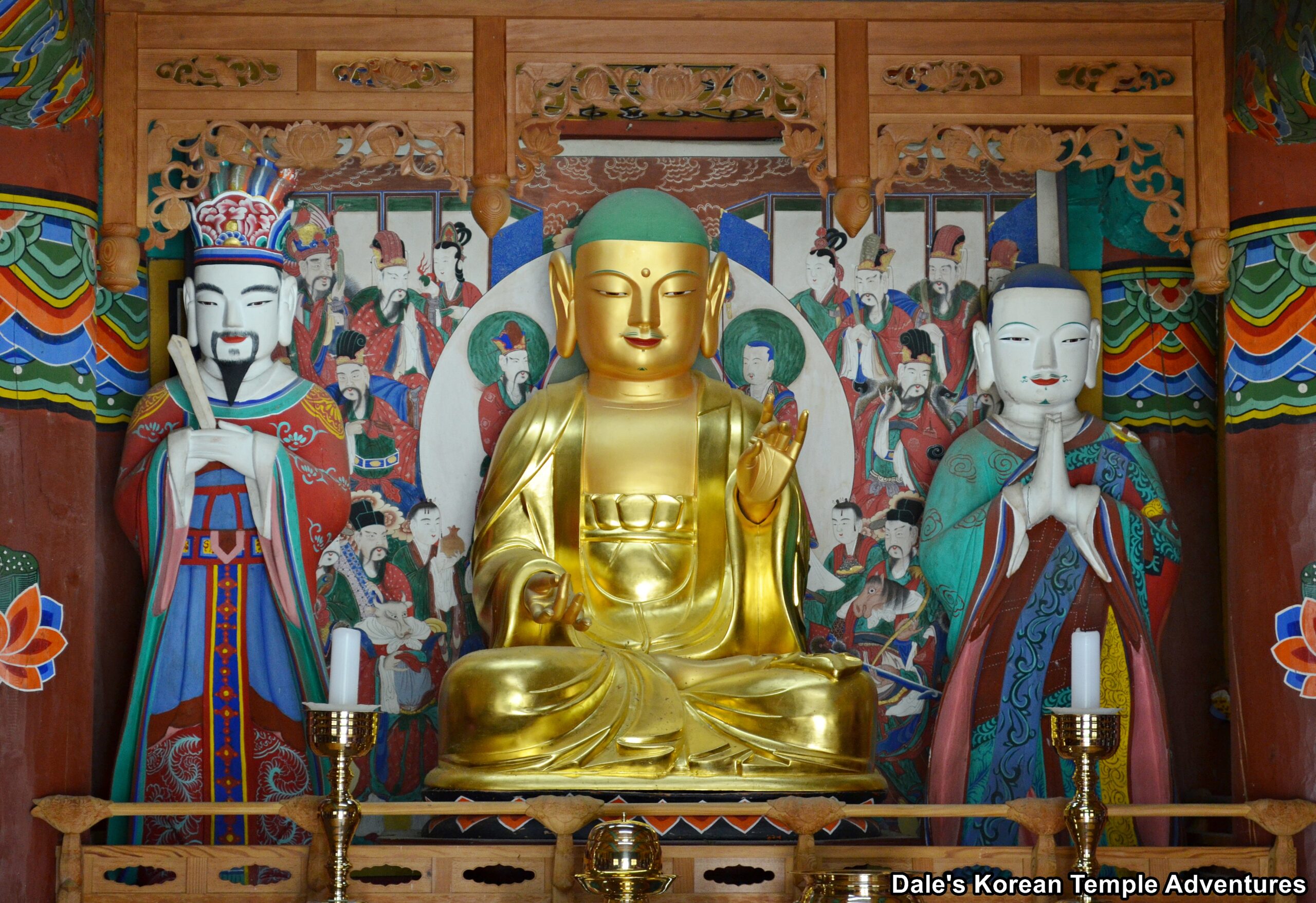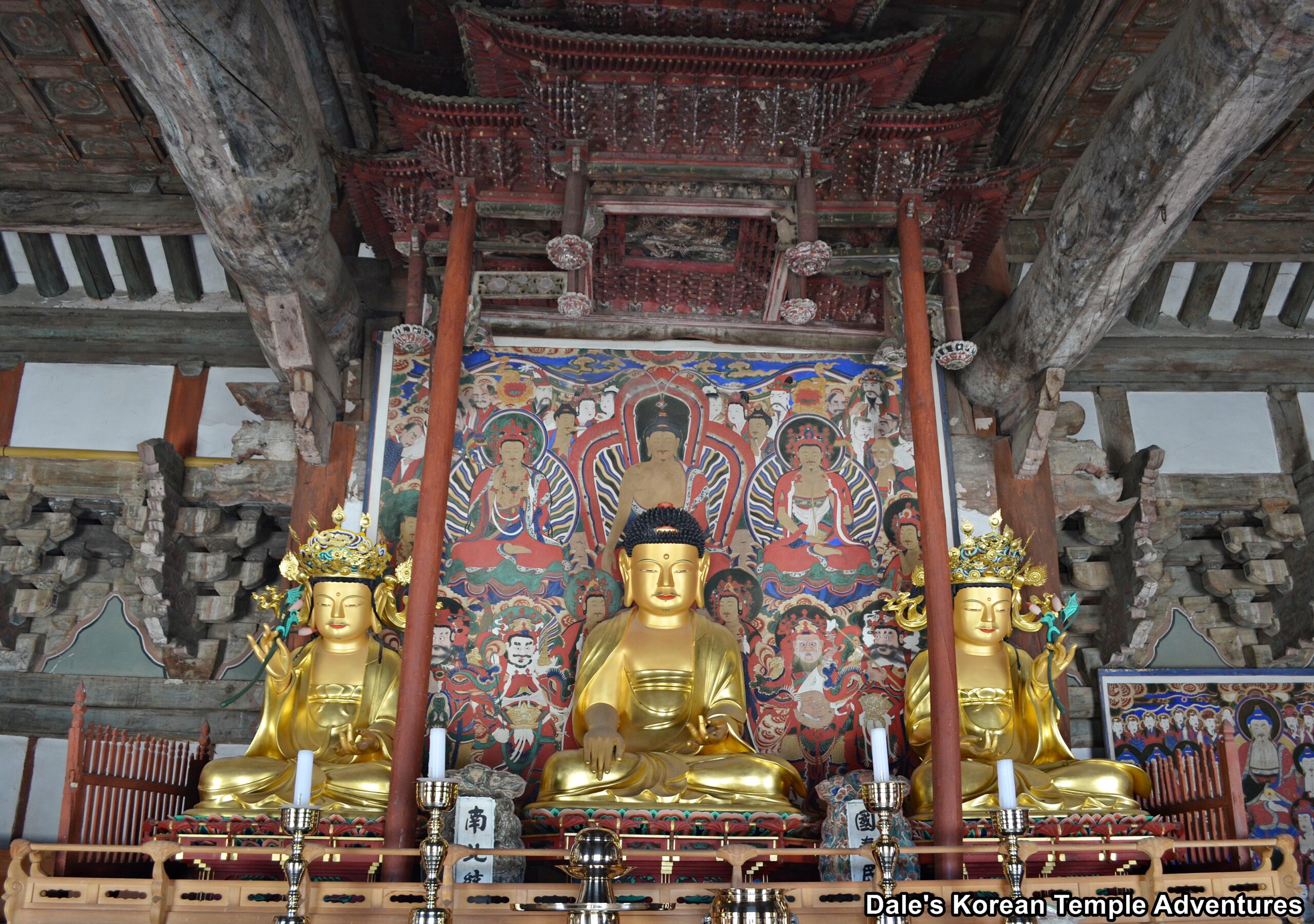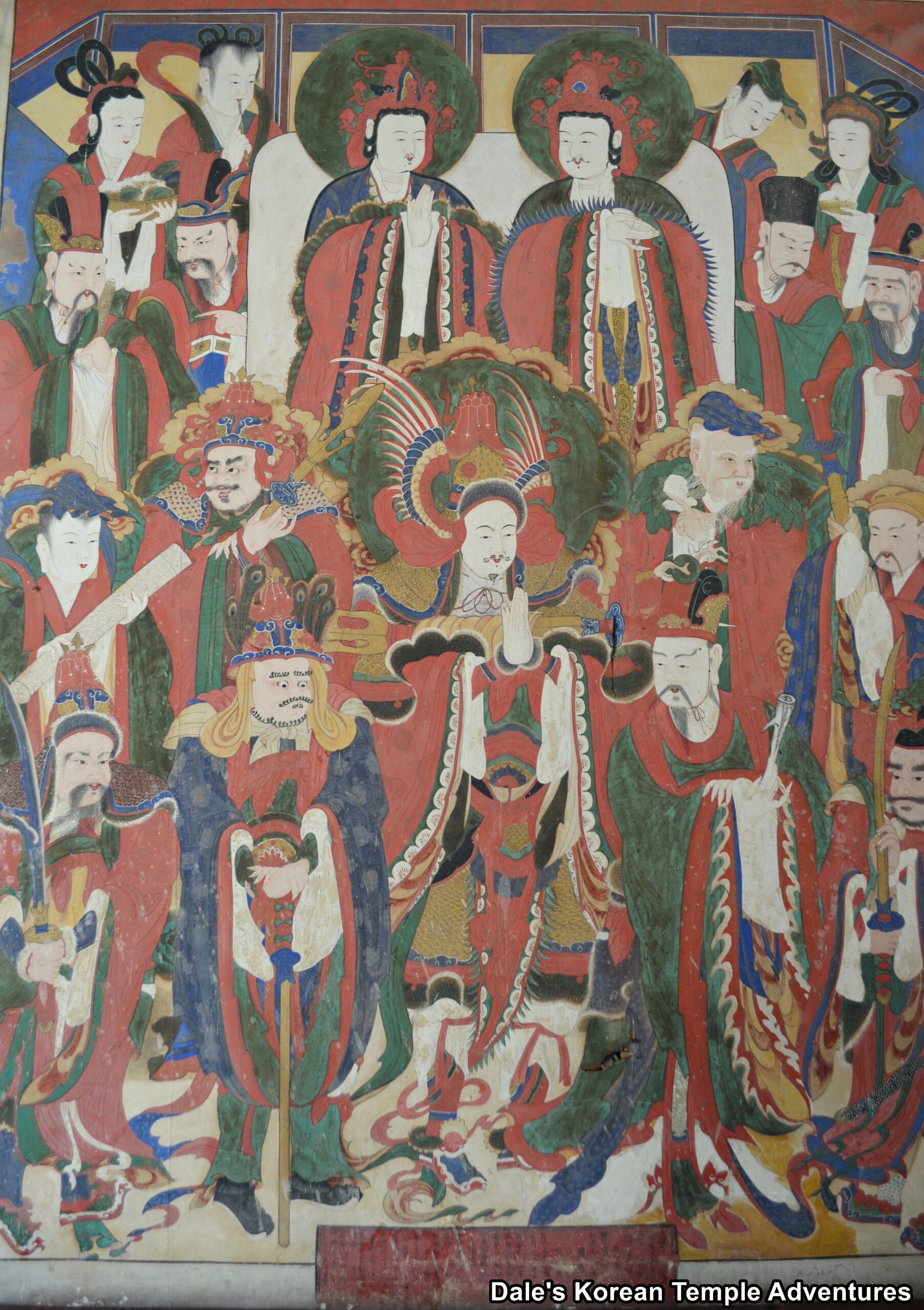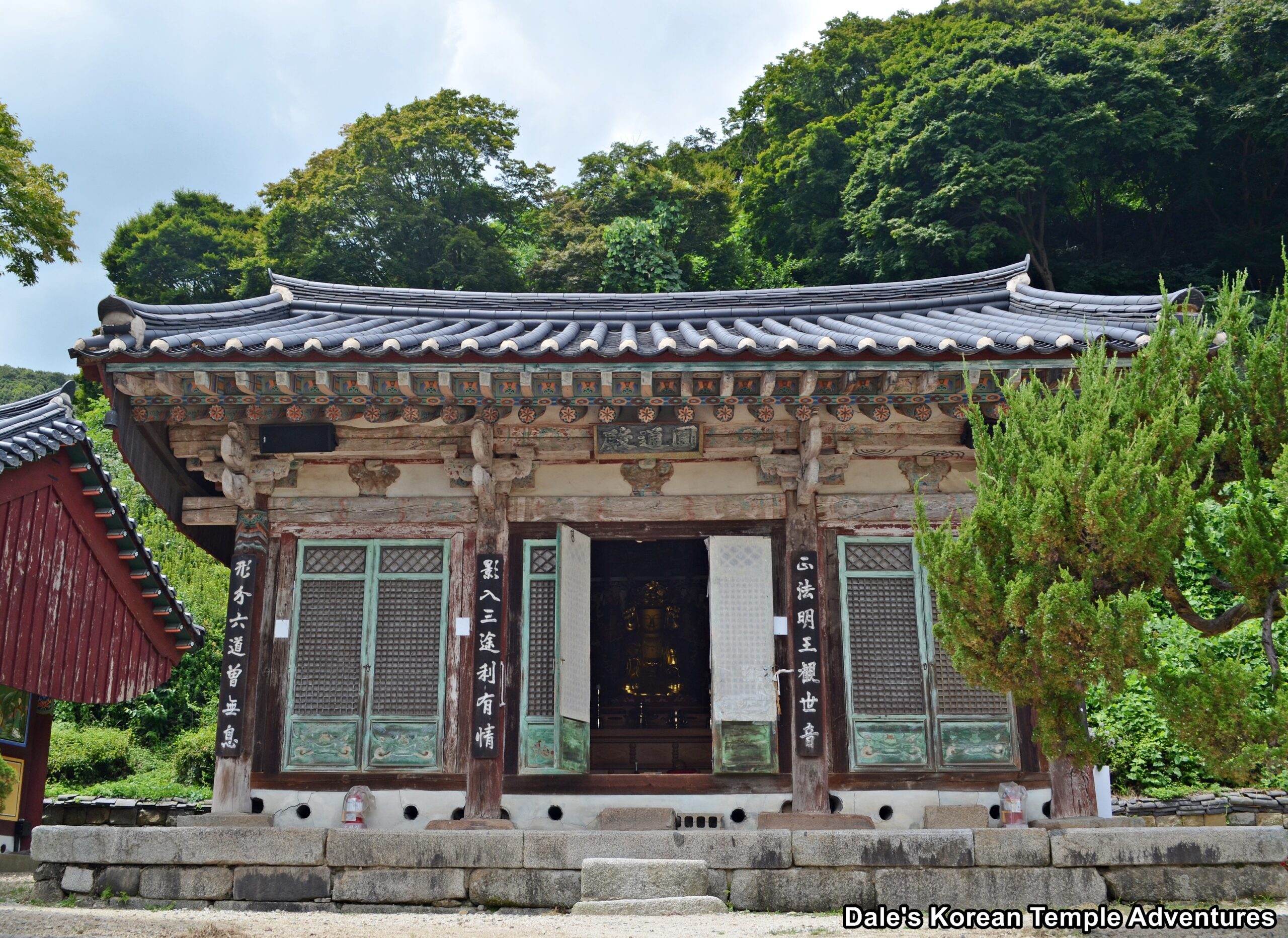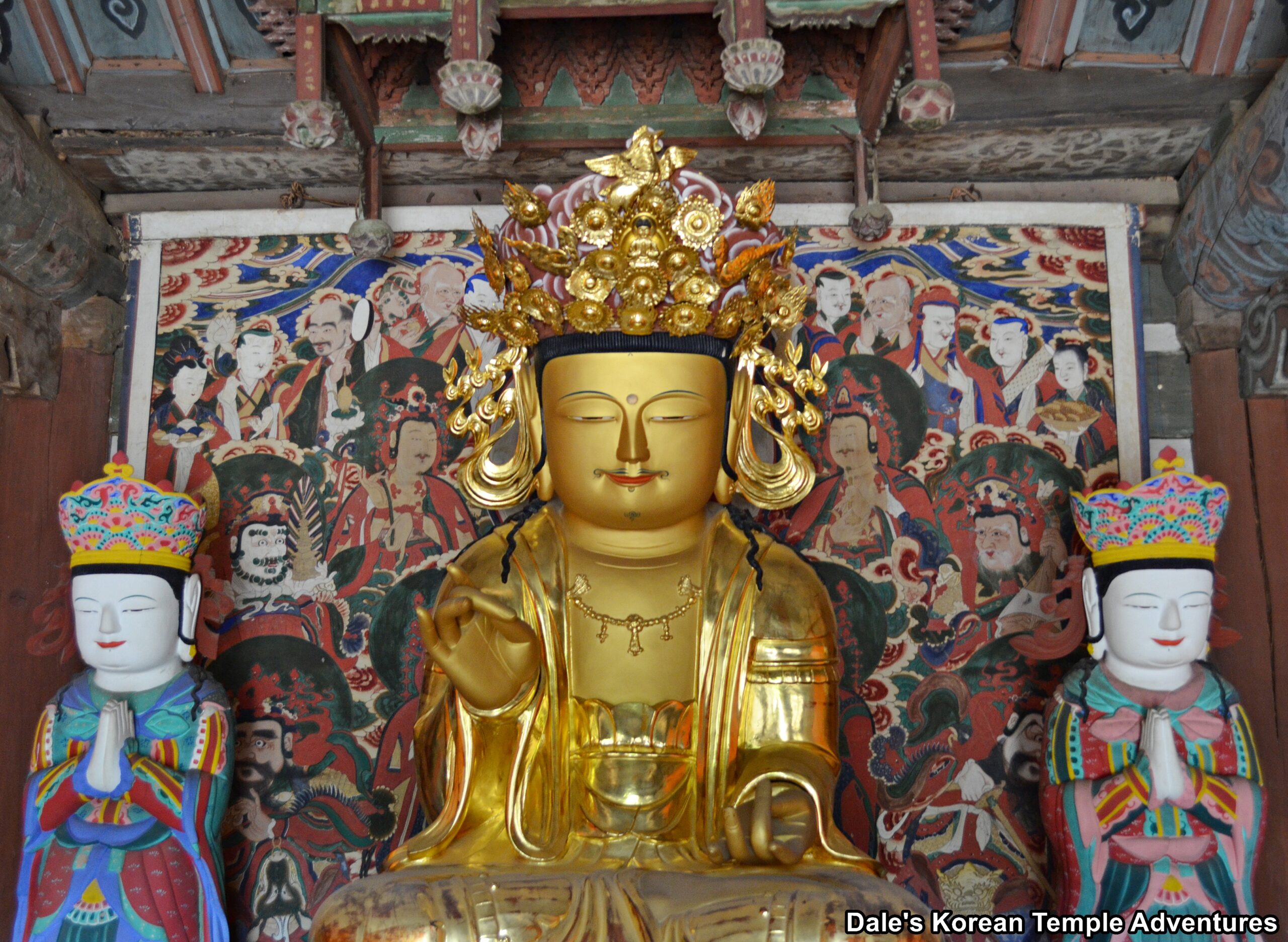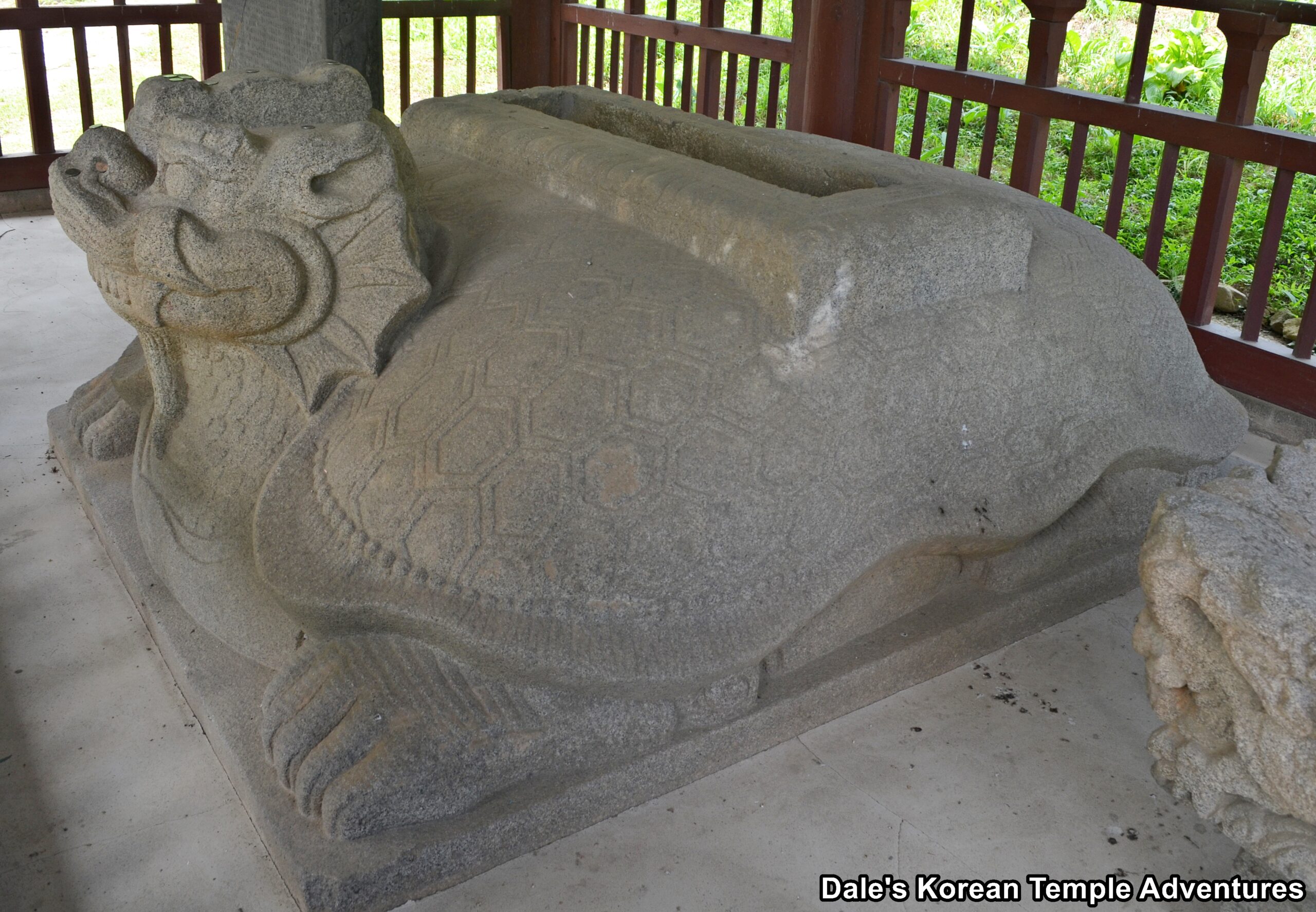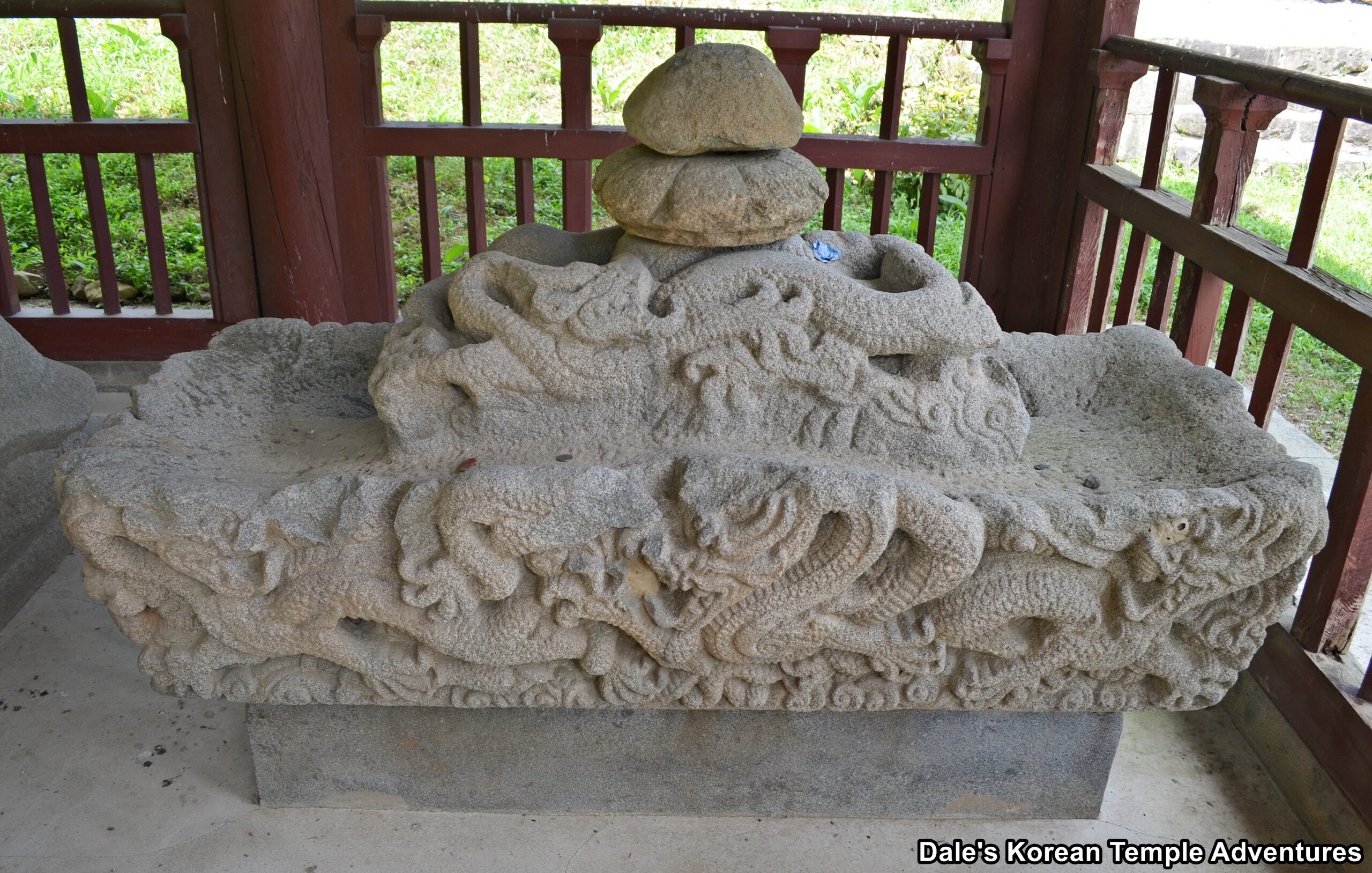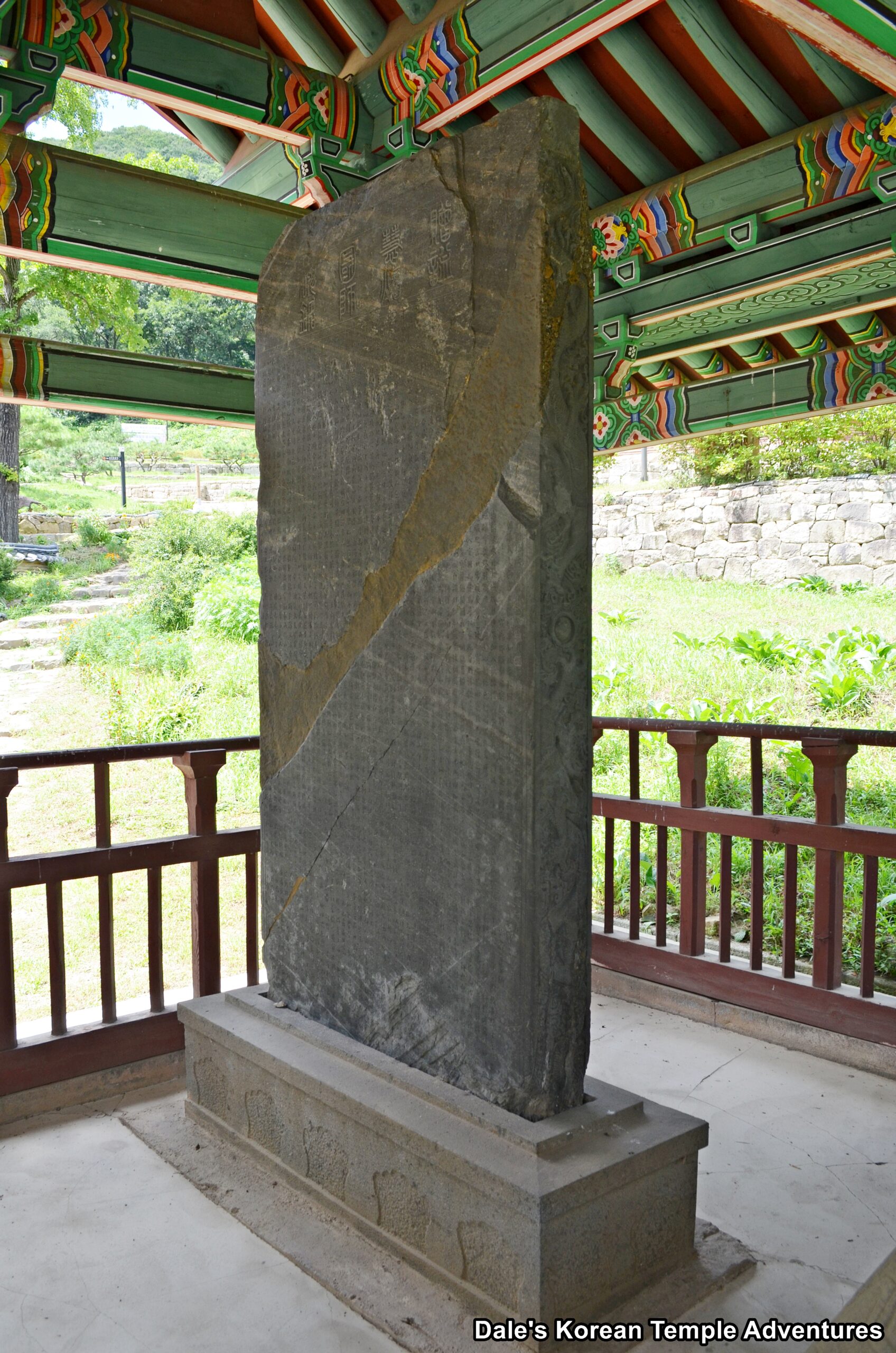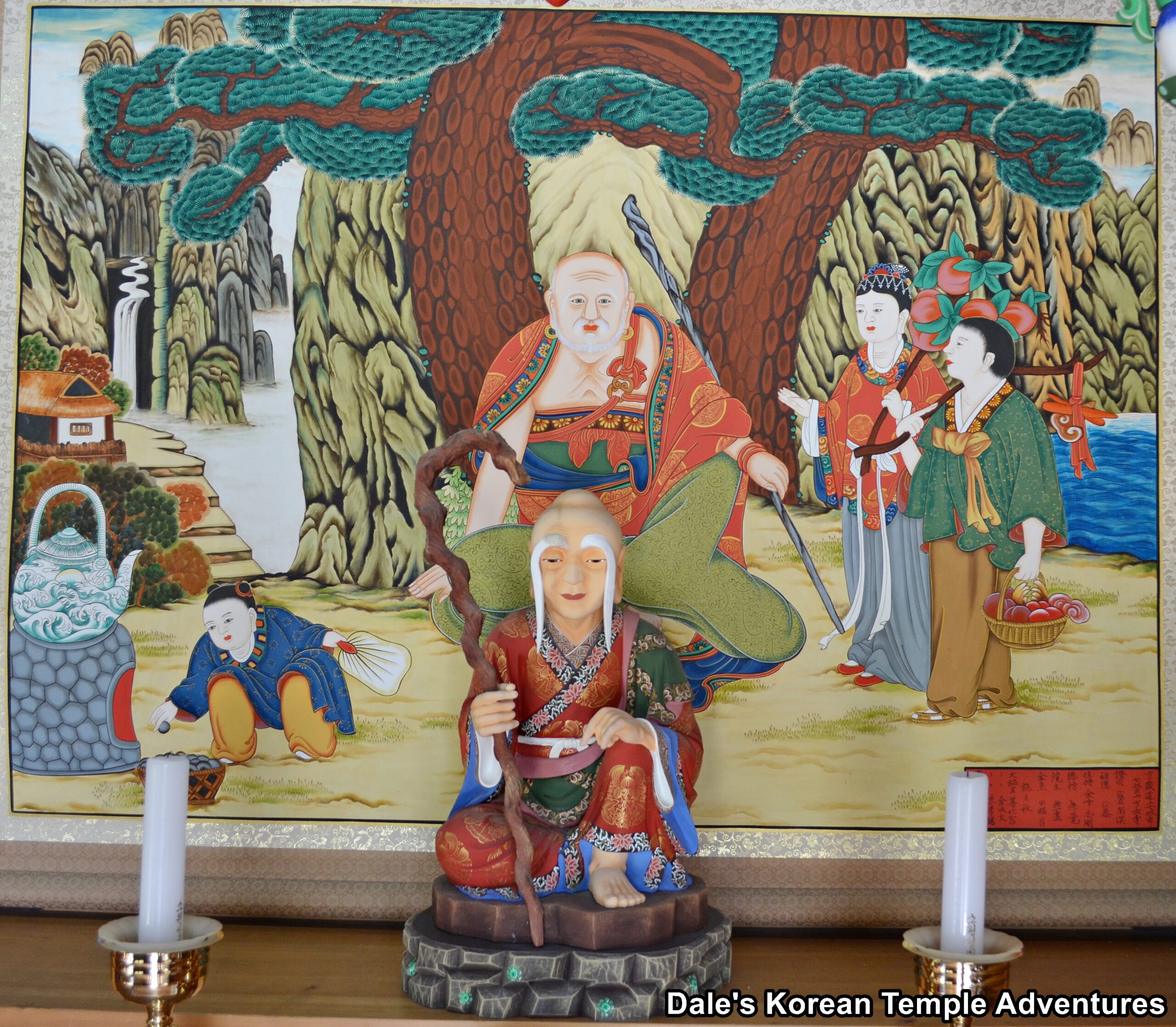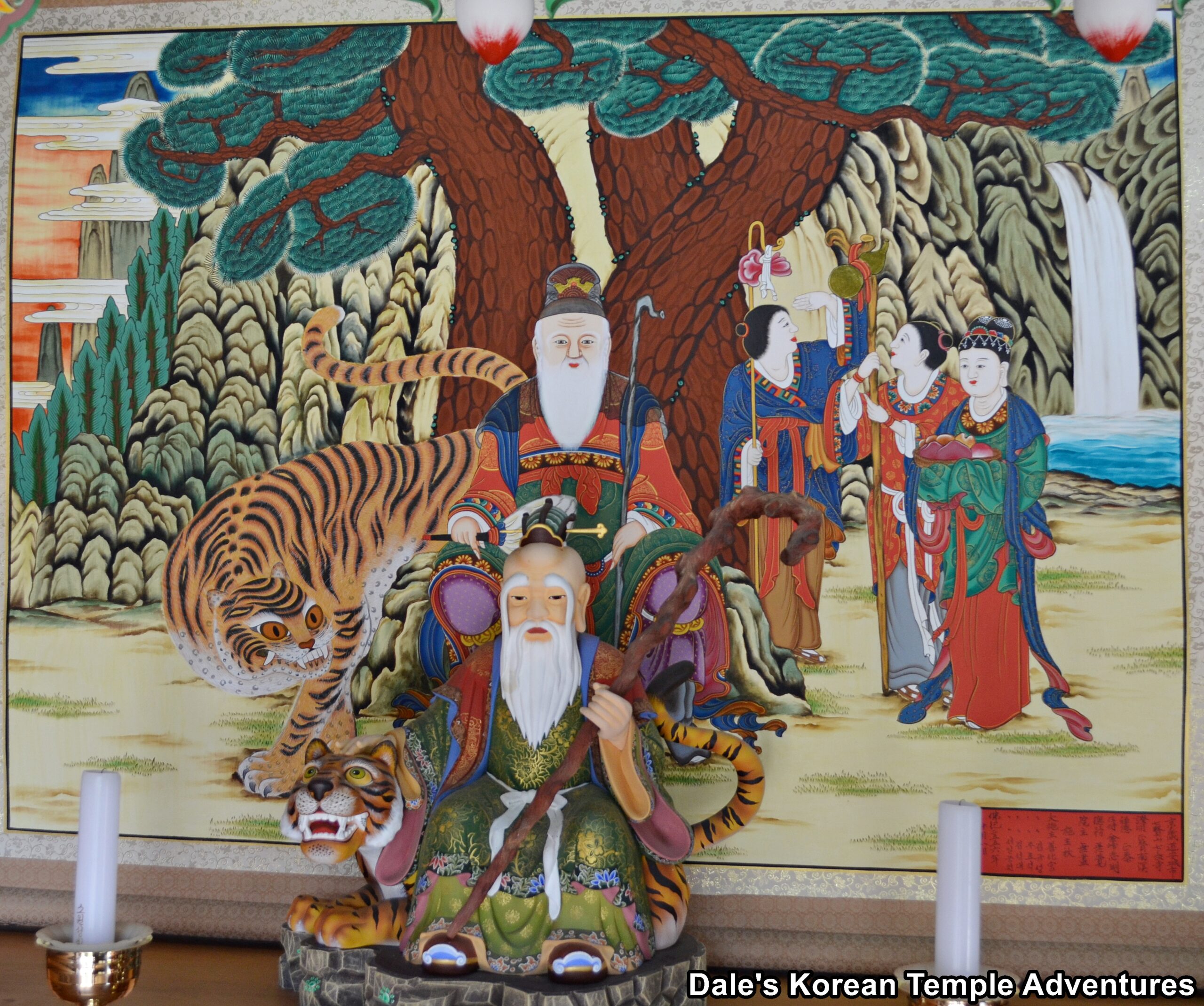Chiljangsa Temple – 칠장사 (Anseong, Gyeonggi-do)
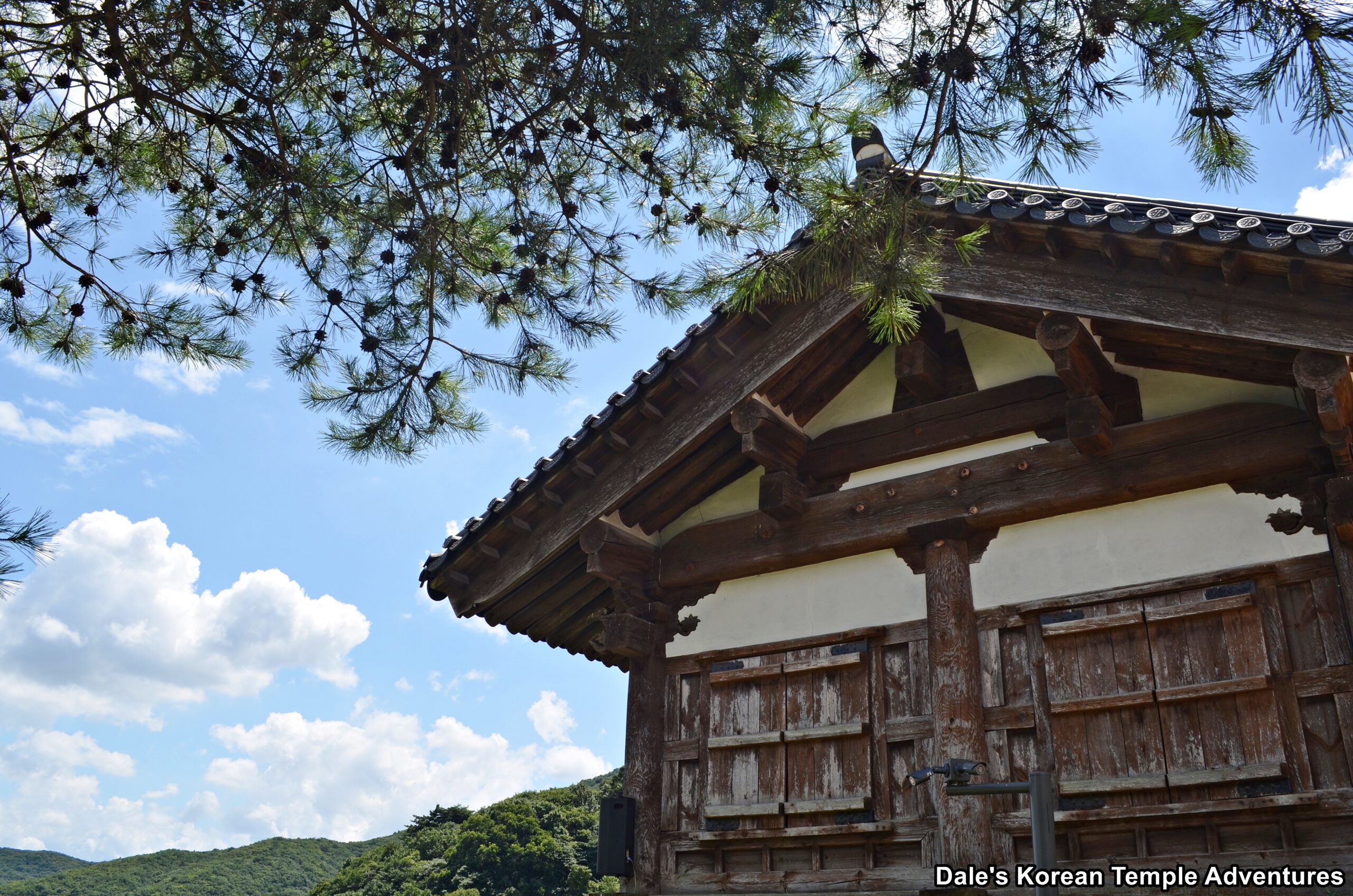
Temple History
Chiljangsa Temple is located in Anseong, Gyeonggi-do in a valley between Mt. Chiljangsan (492.1 m) and Mt. Jebiwolsan (294.4 m). “Chil” in the name of the temple means “seven” in English, which is an auspicious number in traditional Korean culture and Buddhism. As for “jang,” it’s a Chinese character that means “army general” in English. “Jang” also has the meaning of a spiritual guardian that protects people from bad fortune, as well. So the name of the temple, in English, means “Seven Army Generals Temple.” All of this, of course, relates to a temple legend at Chiljangsa Temple (more on that soon).
Chiljangsa Temple is said to have been first founded by Jajang-yulsa (590-658). Several centuries later, and in 1014, the temple was expanded by Hyeso-guksa (972-1054). The temple maintained its great reputation throughout the Goryeo Dynasty (918-1392), when Japanese pirates invaded Korea. The “Annals of the Goryeo Dynasty,” which were kept at a temple in Chungju, Chungcheongbuk-do were temporarily moved to Chiljangsa Temple to protect them from being destroyed in 1383.
During the Joseon Dynasty (1392-1910), Queen Dowager Inmok (1584-1632), who was the wife of King Seonjo of Joseon (r. 1567-1608), selected the temple as the place to pray for the spirits of her deceased father and son. As its location was regarded as being auspicious, many powerful families sought to seize the temple and make it their own private family cemetery. As a result, the temple was destroyed several times by fire. Ultimately, the temple would be destroyed by fire in 1389. Later, the temple would be rebuilt in 1506 by the monk Gansan.
The Chilhyeonsan Mountain Pass, which is where Chiljangsa Temple is located, was an important transportation hub located between Jincheon, Chungcheongbuk-do and Anseong, Gyeonggi-do. The name of the pass comes from the original tale of how seven thieves attempted to rob the temple when Hyeso-guksa was the abbot of the temple. As a result of the temple’s location, Chiljangsa Temple played a part in many tales related to thieves. One of these tales is related to Im Kkeok-jeong (1521-1562), who was considered a type of Robin Hood figure of the mid-Joseon Dynasty.
In 1704, during a large-scale reconstruction of the temple, more than fifty buildings were built on the temple grounds. However, the temple was burned down again in 1887, leaving only the Daeung-jeon Hall, the Wontong-jeon Hall, the Myeongbu-jeon Hall, the Nahan-jeon Hall, and the Sacheonwangmun Gate. Since then, the temple has undergone numerous reconstructions and rebuilds. Overall, the temple is now home to some twelve different buildings.
In total, Chiljangsa Temple is home to one National Treasure, three Korean Treasures, six Tangible Cultural Heritage, and one Cultural Properties Material.
Temple Legends
There are several tales and legends associated with Chiljangsa Temple. It’s said that when Hyeso-guksa was the abbot of the temple, seven thieves came to the temple to rob it. Influenced by the monk’s teachings, the thieves became enlightened. The Buddha statues that are currently housed inside the Nahan-jeon Hall are dedicated to these seven sages.
Another legend connected to the temple concerns Bak Munsu (1691-1756), who was a renowned official from the late Joseon Dynasty. While he was on his way to Hanyang (modern-day Seoul) to take the state examination, Bak spent one night at Chiljangsa Temple. As he slept, Bak had a dream about one of the Nahan (The Historical Disciples of the Buddha) who revealed to Bak the state examination question. As a result of this dream, and the content of this dream, Bak Munsu would go on to place first in the state examination.
Temple Layout
From the temple parking lot, and to the left of the Nu-gak Pavilion, you’ll find the Sacheonwangmun Gate. Chiljangsa Temple is rather oddly oriented with the Sacheonwangmun Gate located to the south. What’s strange about this is that the entry gate isn’t aligned with the main temple courtyard and the main hall. Instead, the Sacheonwangmun Gate sticks-out for being oddly placed in a non-linear line. As for the Sacheonwangmun Gate, it’s exterior walls are plainly adorned in dancheong colours. Stepping into the entry gate, you’ll notice four clay statues of the Four Heavenly Kings. It’s estimated that the statues date back to 1726, which makes them some of the oldest clay or wooden statues of the Four Heavenly Kings in Korea. They were made by creating a wooden frame and then later adding clay and colouring to the statues. They all have bulging eyes, raised black eyebrows, and they have wide open mouths that are meant to invoke fear. The four statues are adorned with crowns known as “bogwan” in Korean. These crowns are adorned with flowers, clouds, and flame patterns. Each wears armor, and each of the four wears a handkerchief around their necks. These statues, which are officially known as the “Four Clay Guardian Kings of Chiljangsa Temple,” are one of the six Tangible Cultural Heritage at Chiljangsa Temple.
Emerging on the other side of the entry gate, and to the right, you’ll notice the Beomjong-gak Pavilion. Housed inside this bell pavilion are three of the four traditional Buddhist percussion instruments. These instruments at Chiljangsa Temple include the Beomjong (Brahma Bell), the Mokeo (Wooden Fish Drum), and the Unpan (Cloud Plate Drum).
Passing to the left of the Beomjong-gak Pavilion, you’ll pass by the backside of a shrine hall with beautiful murals dedicated to Hyeso-guksa and the seven thieves that would become enlightened. From the front, you’ll discover that this shrine hall is in fact the Myeongbu-jeon Hall. Housed inside this hall are the Siwang (The Ten Kings of the Underworld) and a green haired image of Jijang-bosal (The Bodhisattva of the Afterlife) on the main altar. Five of the ten statues are seated on either side of the main altar and Jijang-bosal. To the immediate right and left of Jijang-bosal are a pair of statues. They are Domyeong-jonja and Mudokgwi-wang. Between the Siwang, on the other hand, you’ll find statues of Noksa (figures holding scrolls), who write down and announce the verdicts of the Siwang. And on either side of the entry doors to the Myeongbu-jeon Hall, you’ll find statues dedicated to the Geumgang-yeoksa (Vajra Warriors). Based on an inscription found on the lotus flower pedestal of Jijang-bosal, the Bodhisattva statue was produced between February 25 to May 27, 1713. Officially, these statues are known as the “Wooden Ksitigarbha Bodhisattva Triad and Ten Underworld Kings of Chiljangsa Temple,” and they are yet another Tangible Cultural Heritage at Chiljangsa Temple.
Turning around, and now facing the main courtyard, you’ll find an older three-story stone pagoda in the centre of the courtyard. This pagoda stands in front of the Daeung-jeon Hall at Chiljangsa Temple. The Daeung-jeon Hall is Korean Treasure #2036 as of August, 2019. The exterior walls are adorned in white panels and fading dancheong colours. The Daeung-jeon Hall was remodeled in 1790 and was rebuilt in 1828. Stepping inside the Daeung-jeon Hall, you’ll find a triad of statues known as the “Wooden Seated Buddha Triad of Daeungjeon Hall at Chiljangsa Temple” on the main altar. The central image is that of Seokgamoni-bul (The Historical Buddha), who is joined on either side by Mireuk-bul (The Future Buddha) and Yeondeung-bul (The Past Buddha). The statue were first sculpted in 1685 by eight sculptor monks. The central image of Seokgamoni-bul has a slight smile, while those of the accompanying Buddhas have beautifully ornate crowns. This triad is yet another of the Tangible Cultural Heritage at Chiljangsa Temple.
Rounding out the interior of the Daeung-jeon Hall is an older solitary Siwang (Ten Kings of the Underworld) painting when you immediately enter the main hall. Hanging on the far right wall is a mural dedicated to Jijang-bosal, as well as a Chilseong (Seven Stars) mural. The final mural inside the Daeung-jeon Hall, and hanging on the far left wall, is an older Shinjung Taenghwa (Guardian Mural) with a central image of Dongjin-bosal (The Bodhisattva that Protects the Buddha’s Teachings) who has a helmet adorned with large wings.
To the immediately left of the Daeung-jeon Hall is the Wontong-jeon Hall, which is equally adorned with fading dancheong around its exterior walls. Stepping inside the Wontong-jeon Hall, you’ll find a statue dedicated to Gwanseeum-bosal (The Bodhisattva of Compassion) wearing a large, regal crown. The interior is lined with white porcelain statuettes of Gwanseeum-bosal, as well as an older Shinjung Taenghwa (Guardian Mural).
To the left of the Wontong-jeon Hall is the off-limits Josa-jeon Hall. And to the left of the Josa-jeon Hall, but before making the ascent towards the upper courtyard at Chiljangsa Temple, is the Gongdeok-jeon Hall. The exterior walls are adorned with murals dedicated to Amita-bul (The Buddha of the Western Paradise) and a Dragon Ship of Wisdom mural, as well. Stepping inside this compact shrine hall, you’ll find a main altar triad centred by Amita-bul and joined on either side by Jijang-bosal and Gwanseeum-bosal. Hanging on the far right wall is a vibrant Gamno-do (Sweet Dew Mural).
Now making the walk up towards the upper courtyard, you’ll first come across the Nahan-jeon Hall. Stepping inside the Nahan-jeon Hall, you’ll find a main altar with seven white, stone Nahan statues. These are the seven sages from the temple legend. These seven statues are backed by another white statue; this time, of Seokgamoni-bul. This older stone image dedicated to the Historical Buddha is joined on either side by two modern statues dedicated to Mireuk-bul and Yeondeung-bul.
To the right of the Nahan-jeon Hall is the pavilion that houses the “Stele for State Preceptor Hyeso at Chiljangsa Temple,” which is Korean Treasure #488. The stele was first constructed in 1060. This stele was erected to commemorate the life and achievements of Hyeso-guksa. Presently, the three parts that comprise a traditional biseok (stele) are placed separately inside the pavilion with the main body stone erected to the left of the tortoise-shaped pedestal. The main body stone is made of black marble. The inscription of the stele records the life, achievements, and virtues of Hyeso-guksa. As for the capstone, it has two dragons and swirling clouds adorning it. Overall, the stele is well-preserved.
In addition to how well preserved the stele is, there is also a legend that surrounds the “Stele for State Preceptor Hyeso at Chiljangsa Temple,” as well. This legend is related to Katō Kiyomasa (1562-1611), who was a Japanese general during the invasion of the Korean Peninsula during the Imjin War (1592-98). During this invasion, and in 1592, Katō arrived at Chiljangsa Temple. During this visit, an old monk suddenly appeared to rebuke Katō for his numerous transgressions. Katō grew angry with the elderly monk, so Katō attempted to stab the monk with his sword. But before Katō could slash at the elderly monk, the monk had vanished. So instead of killing the monk, Katō cracked the stele with his thrust. Rather remarkably, not only was the stele cracked, but it was left bleeding, as well. Frightened by this extraordinary event, Katō fled the temple and the area. Whether the legend was made to fit the condition of the stele, or vice versa, the current shape of the stele has a crack through the centre of the historic stele dedicated to Hyeso-guksa.
And to the rear of the pavilion that houses the “Stele for State Preceptor Hyeso at Chiljangsa Temple” is the temple’s Samseong-gak Hall. The shaman shrine hall houses three newly rendered images dedicated to Chilseong (The Seven Stars), Dokseong (The Lonely Saint), and Sanshin (The Mountain Spirit). Of the three, have a look at the ferocity of the tiger that accompanies Sanshin in his mural.
How To Get There
From the Anseong Intercity Bus Terminal, you’ll need to take Bus #37, Bus #37-1, or Bus #370. You’ll then need to get off at the “Juksan Samgeo-ri – 죽산삼거리” stop after 21 stops. And from this bus stop, you’ll need to take Bus #3-2. From this bus, you’ll need to get off at the “Sanjik/Chiljangsa – 산직/칠장사” stop after ten bus stops. From this stop, you’ll need to walk just three minutes to get to the temple.
And if public transportation isn’t your thing, you can simply take a taxi from the Anseong Intercity Bus Terminal. The taxi ride will take 30 minutes, and it’ll cost you 30,000 won.
Overall Rating: 8.5/10
There’s a lot to see and appreciate at Chiljangsa Temple. There are wonderful legends directly connected to the founding and expansion of the temple. Additionally, there are beautiful statues inside both the Myeongbu-jeon Hall and the Daeung-jeon Hall. The artwork that adorns the exterior of the Myeongbu-jeon Hall and the Gongdeok-jeon Hall shouldn’t be overlooked either. But the main highlights to this temple are the statues inside the Sacheonwangmun Gate, the white, stone statues inside the Nahan-jeon Hall, and the “Stele for State Preceptor Hyeso at Chiljangsa Temple.” Take your time and enjoy all that Chiljangsa Temple has to offer.

